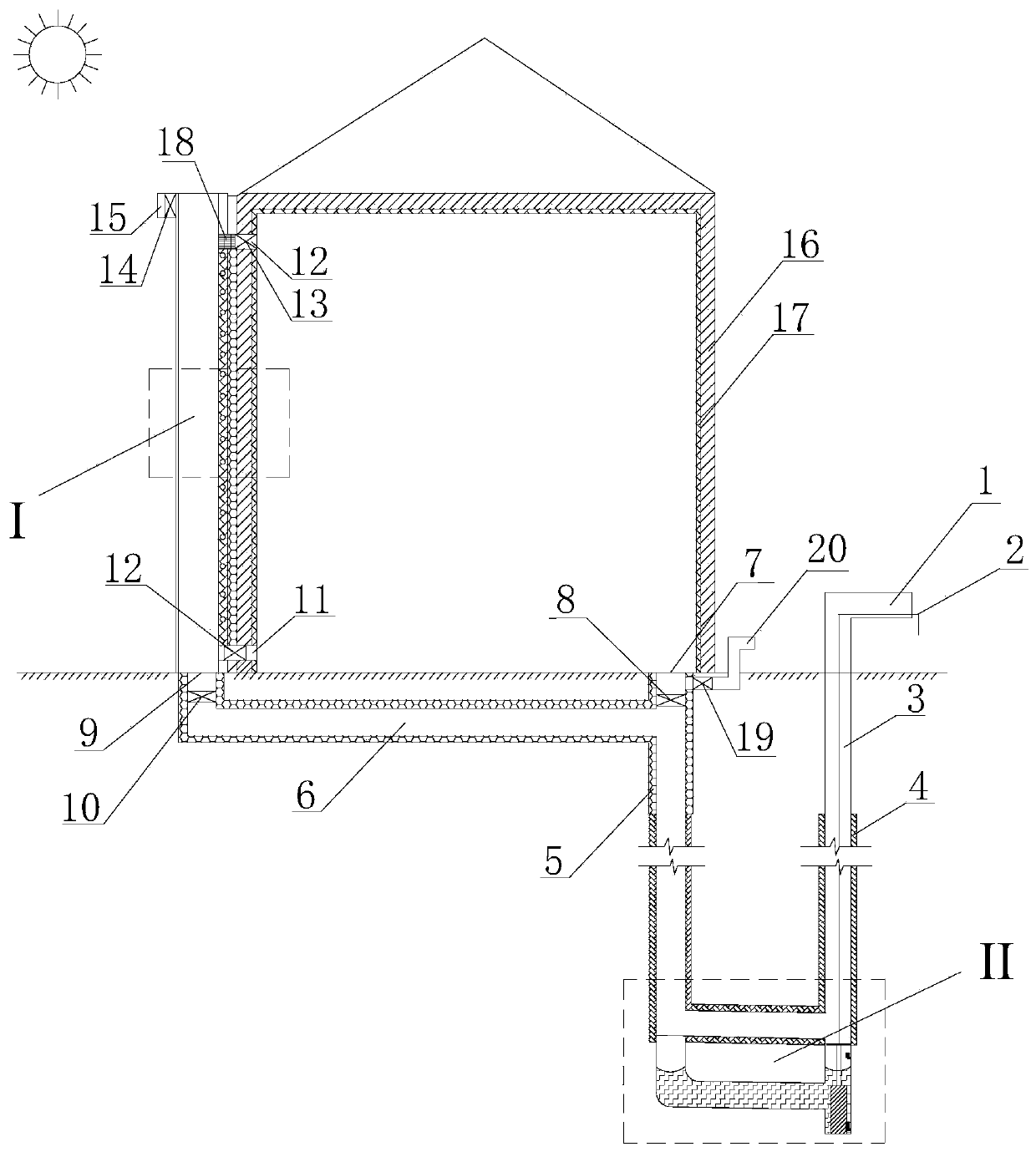Energy complementary passive house of Trombe wall and soil-air heat exchange system based on energy storage
An air heat exchange and energy complementary technology, applied in solar heating systems, air conditioning systems, heating systems, etc., can solve the problems of small lift, large floor space, easy damage, etc., and achieve zero energy consumption and improve operating efficiency. Effect
- Summary
- Abstract
- Description
- Claims
- Application Information
AI Technical Summary
Problems solved by technology
Method used
Image
Examples
Embodiment 1
[0031] Embodiment 1, summer:
[0032] see Figure 4 , the dampers 8, 12 and 16 are opened, and the dampers 10, 14 and 20 are closed. The cavity 25 of the Trombe wall is heated by solar radiation, and the temperature of the air in the cavity 25 rises and is discharged from the air outlet 15, causing the air pressure at the bottom of the cavity to decrease, forming an air drive from the room to the cavity. The indoor air pressure becomes smaller to further promote the air flow in the buried pipe 3, and the outdoor hot air lowers its temperature by exchanging heat with the soil, and then it is sent into the room to provide cooling capacity, because the system does not need fans to provide it in summer Power, truly realize the zero energy consumption of the building. The Trombe wall cavity 25 also transfers heat to the phase change energy storage module 24 when the system is running, and then to the medium of the hot water pipe 23 to generate a certain amount of hot water throug...
Embodiment 2
[0033] Embodiment 2, winter:
[0034] see Figure 5 , the dampers 10, 14 and 20 are opened, and the dampers 8, 12 and 16 are closed. The outdoor cold air is firstly preheated by the soil-air heat exchange system through the buried pipe 3, and the preheated air enters the cavity 25 of the Trombe wall through the tuyere 9 for reheating, and the reheated air is sent into the room through the fan 19 , so as to satisfy indoor thermal comfort, and the air after indoor heat exchange is discharged outside through the air outlet 21 . When the outdoor solar radiation cannot meet the air heating requirements of the cavity 25, start the phase change energy storage external wall hot water system, that is, heat the phase change energy storage module 24 through the auxiliary heat source, and further heat the cavity after preheating air, so as to meet the requirements of indoor air supply temperature in winter.
PUM
| Property | Measurement | Unit |
|---|---|---|
| Thickness | aaaaa | aaaaa |
| Diameter | aaaaa | aaaaa |
| Thickness | aaaaa | aaaaa |
Abstract
Description
Claims
Application Information
 Login to View More
Login to View More - R&D
- Intellectual Property
- Life Sciences
- Materials
- Tech Scout
- Unparalleled Data Quality
- Higher Quality Content
- 60% Fewer Hallucinations
Browse by: Latest US Patents, China's latest patents, Technical Efficacy Thesaurus, Application Domain, Technology Topic, Popular Technical Reports.
© 2025 PatSnap. All rights reserved.Legal|Privacy policy|Modern Slavery Act Transparency Statement|Sitemap|About US| Contact US: help@patsnap.com



